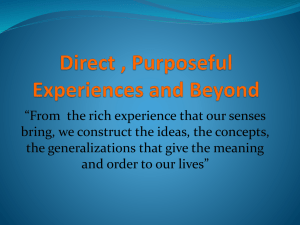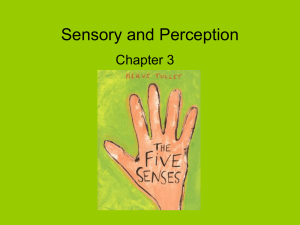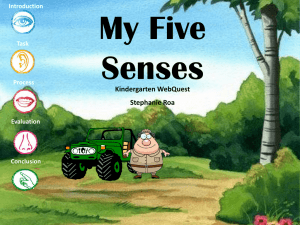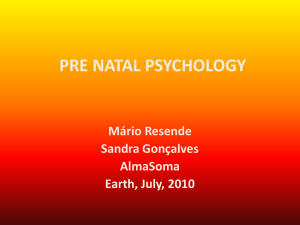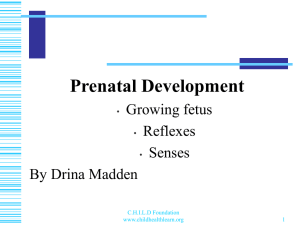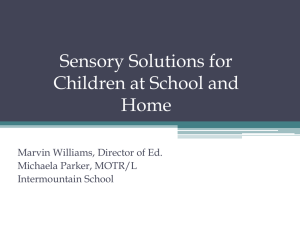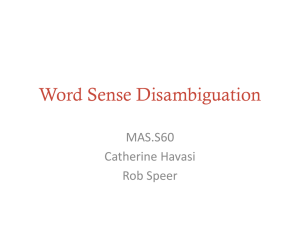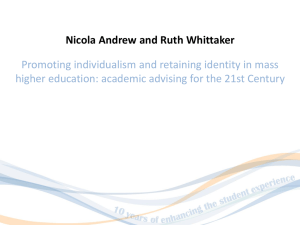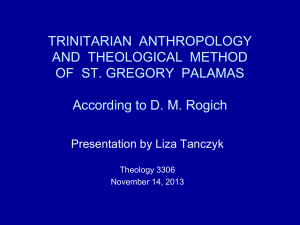12.1 General and Special Senses
advertisement
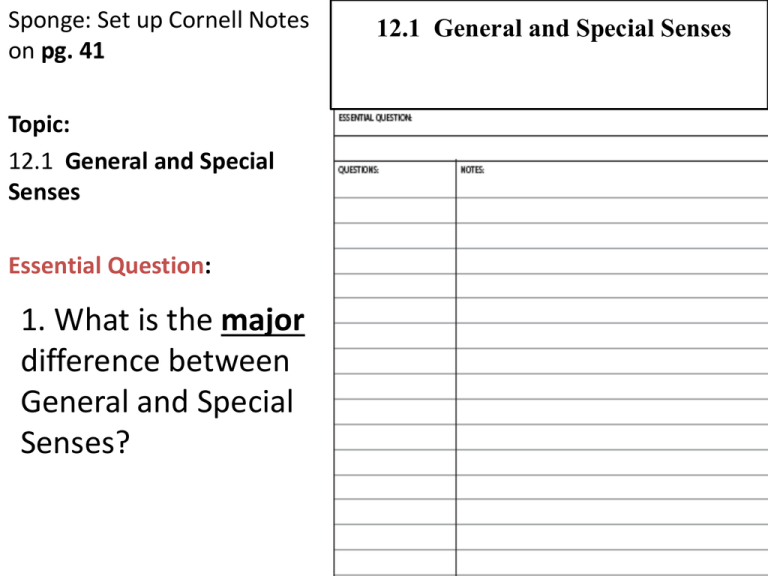
Sponge: Set up Cornell Notes on pg. 41 Topic: 12.1 General and Special Senses Essential Question: 1. What is the major difference between General and Special Senses? 12.1 General and Special Senses 2.1 Atoms, Ions, and Molecules Pg. 40 1. Name your 5 senses. 2. There are two types of senses, general senses and special senses, hypothesize which of the 5 senses belong in each category. General Senses General Senses are those with receptors that are widely distributed throughout the body Ex: Skin, various organs, muscles, and joints, viscera 3 Which of the 5 sensory receptors goes with each type of general sense? • Touch/Pressure • Mechanoreceptors • Temperature • Thermoreceptors • Pain • Pain receptors General Senses General Senses can be divided into three groups: • Exteroceptive senses – senses associated with changes at the body surface • Ex: touch, pressure, temperature, pain • Visceroceptive senses – senses associated with changes in viscera (internal organs) • Ex: blood pressure stretching blood vessels, ingesting a meal • Proprioceptive senses – senses associated with changes in muscles and tendons and in body position 5 Special Senses Special Senses have more specialized receptors whose receptors are located in the complex sensory organs of the head Based on their location, hypothesize which senses are “special senses” 6 Which type of receptor goes with each type of special sense? • Smell • Chemoreceptors (olfactory receptors) • Taste • Chemoreceptors (taste cells aka gustatory cells-located in taste buds) • Hearing • Mechanoreceptors (hair cells) • Vision • Photoreceptors (rods and cones) Special and General Senses (5m25s) Pg. 40 • Take 3-5 bullets about each sense • • • • • Vision Hearing Taste Smell Touch (Video in this order) All senses work basically the same way: • Sensory receptors stimulate neurons to send impulses along sensory fibers to the brain • There the cerebral cortex forms a “perception” In your own words… Pg. 40 Explain what you think the difference is between Sensation and Perception . 10 Senses Sensation is a feeling that occurs when brain becomes aware of sensory impulse based on new experiences or recalled memory • The resulting sensation depends on which region of the cerebral cortex receives the impulse A pleasant sound Ex: a soft Touch Small black lines 11 Sensations Projection is a process in which the brain projects the sensation back to the apparent source • It allows a person to pinpoint the region of stimulation • Exs: • The eyes see an apple • The nose smells an apple • The ears hear the crunch as we bite into an apple 12 Senses Perception is a person’s view of the stimulus; the way the brain interprets the information Classical music playing Ex: the feel of a hand Letters on an eye chart 13 Pathways From Sensation to Perception (Example of an Apple) Pg 40 14 Let’s take a look at how your brain “perceives” these optical illusions. Write down the first picture you see. Pushing the Limits: Sensation (8m 11s)

